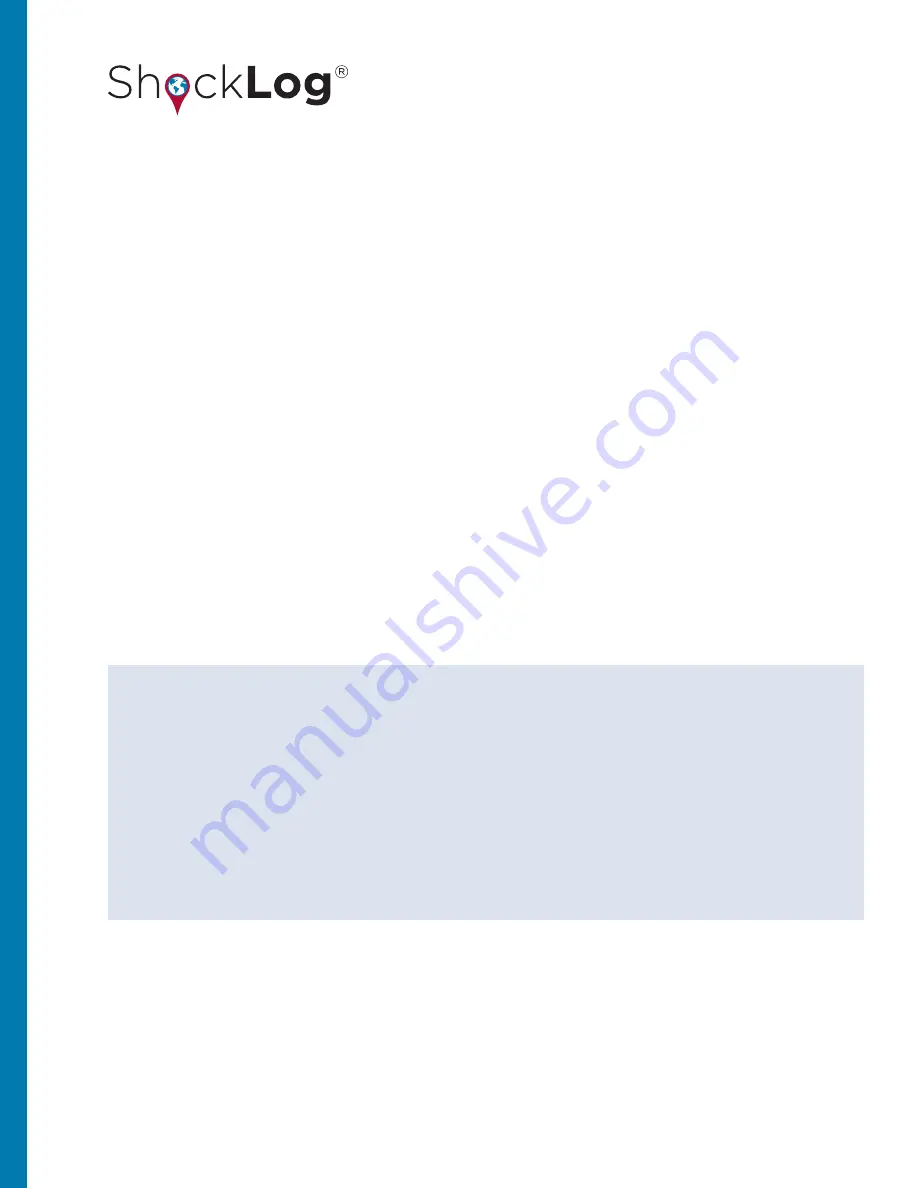
30
This document is written and published by ShockWatch, Inc. All rights reserved.
USER MANUAL
MAX TIME
Max time is the length of any recorded event. All events are recorded for at least 1 second. The longer the event,
the more the data will be compressed. In certain situations, it may be desirable for the ShockLog to record the full
length of an event (potentially up to 128 seconds). If this is the case, the “Always Max” box must be selected. In
general, this setting is only used in a test environment, as most impact events are less than 1 second in duration.
Unless there is a specific reason to do so, do not use the Always Max setting. Let the ShockLog decide when the
event has finished by the dropout threshold. The dropout threshold is covered in the Understanding Threshold
Levels section.
ORDERED DATA
Unless Always Max is selected, the ShockLog will record events in an uncompressed format displaying the full
4096 samples per second.
THRESHOLDS
Range ‘g’ or ‘Velocity’
The range field sets the maximum g-level to be recorded by the ShockLog. To set the ‘g’ range, click the drop-down
menu and view all the possible ranges (1, 3, 10, 30, 100 & 200). The ShockLog 298 has the ability to record in
velocity; this will automatically occur if a range in cm/s is selected. However, most users are interested in g-range.
Hardware Filter
After the range is selected, set the frequency cut off of the hardware filters to be applied to the event data. These
filters enable users to reduce the number of unwanted higher frequency events where it is known that this type of
event will not cause damage to the object being monitored.
The lower the filter frequency, the more severe it is in eliminating high-frequency events. The lower frequency
filters are generally used for large heavy objects with a high metallic content, especially where the object is prone
TIP:
Selecting the range is a very important part of the ShockLog setup. Be aware of what impact levels are of
interest. Do not assume if the ShockLog is set to the 100g range everything will be recorded. In this scenario,
the resolution will be compromised, and low-level events may not be recorded at all. The wake-up threshold
for a detailed event must be at least 5% of range (and recommended to be no less than 10%). On a 100g range,
events lower than 10g with a 10% wake up threshold will not be recorded.
It is impossible to make exact recommendations for the range on a particular shipment. However, as a rule of
thumb, the larger and heavier the object, the less acceleration (g) it takes to damage. Therefore, the 10g range
is generally used for large objects (e.g. something weighing tons). The 30g, 100g and 200g ranges are used for
lighter shipments.
Summary of Contents for ShockLog 248
Page 1: ...USER MANUAL...














































